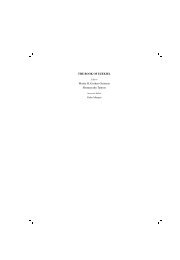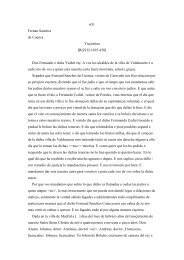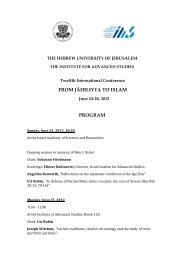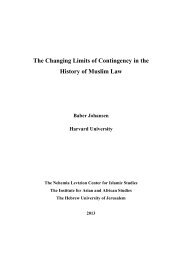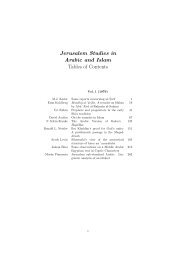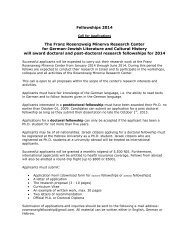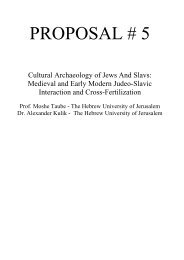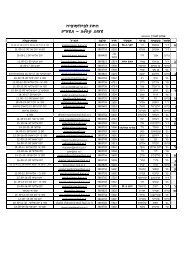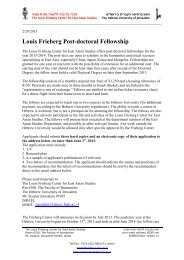Proverbs 7 in MT and LXX: Form and Content
Proverbs 7 in MT and LXX: Form and Content
Proverbs 7 in MT and LXX: Form and Content
You also want an ePaper? Increase the reach of your titles
YUMPU automatically turns print PDFs into web optimized ePapers that Google loves.
134<br />
Tova Forti <strong>and</strong> Zipora Talshir<br />
created by the parallel stichs. He offers <strong>in</strong>stead a more narrative-like style.<br />
We are not deal<strong>in</strong>g either with different authors or different translators<br />
with<strong>in</strong> Prov 7, <strong>and</strong> yet the mode of expression changes as the speech<br />
evolves, due to the thematic diversity of its different parts.<br />
The Introductory Address (Verses 1–5)<br />
In the <strong>in</strong>troduction the wisdom-teacher calls for the attention of his listener<br />
to his teach<strong>in</strong>g <strong>in</strong>sistently <strong>and</strong> enthusiastically, to the po<strong>in</strong>t of actually<br />
identify<strong>in</strong>g his teach<strong>in</strong>g with wisdom itself (vv. 1–4). V. 5 expla<strong>in</strong>s the<br />
purpose of it all: wisdom will keep its followers from an . The Greek<br />
translator ma<strong>in</strong>ly reta<strong>in</strong>s the form, contents <strong>and</strong> spirit of these <strong>in</strong>troductory<br />
say<strong>in</strong>gs. The focus, nevertheless, shifts <strong>in</strong> the <strong>LXX</strong> because of an addition <strong>in</strong><br />
v. 1a that <strong>in</strong>troduces the reverence of the Lord.<br />
The five verses of the <strong>in</strong>troduction each conta<strong>in</strong> two parallel stichs, fairly<br />
structured, although not <strong>in</strong> identical symmetries. Except for v. 3 that offers<br />
straight parallels (a, b–a’, b’), the parallelism is chiastic: V. 4 features a fully<br />
chiastic structure (a, b, c–c’, b’, a’), whereas <strong>in</strong> vv. 1, 2 <strong>and</strong> 5 the second stich<br />
repeats only part of the elements of the first stich but enlarges one of them<br />
so that the number of items is largely preserved: v. 1 (a, b, c–c’, b’, d’), v. 2<br />
(a, b, c–b’, d’), v. 5 (a, b–b’, c’). The parallelism is almost entirely preserved<br />
<strong>in</strong> the <strong>LXX</strong>, with only two variations: a m<strong>in</strong>or change <strong>in</strong> word order <strong>in</strong> v. 4<br />
<strong>and</strong> a paraphrase at the expense of the parallelism <strong>in</strong> v. 5. 9<br />
Verse 1<br />
<br />
<br />
<br />
<br />
<br />
c b a *<br />
d’ b’ c’ * <br />
! "# $<br />
9 The translations <strong>in</strong>to English used below, unless otherwise stated, are the NJPS<br />
for the <strong>MT</strong>, <strong>and</strong> Brenton for the <strong>LXX</strong>.



